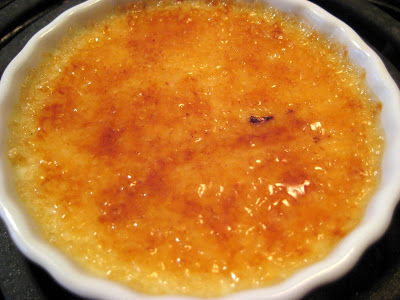I have store-bought puff pastry in the freezer and Shawn purchased some black raspberries from Trader Joe's.*
Although the weather has been hot, mid-80's F inside, today was a lot cooler, mid-70's inside, I've been eager to bake a dessert using puff pastry and the berries.
Thumbing through Julia Child's The Way to Cook I spotted a couple promising recipes. Also, searching through the internet, I found a recipe for Jalousie from the Fine Cooking magazine website - Mixed Berry Jalousie.
According to Julia Child, Jalousie (Ja-la-see) is the French name for Venetian blind.
Mixed Berry Jalousie
Preheat oven: 400F
The Fixins'
12 oz Black Raspberries (Original recipe calls for 14 oz of mixed berries)
1/4 cup granulated sugar (I weighed out 50 gram of sugar)
1 tsp fresh lemon juice
Pinch cinnamon
Pinch salt
1-1/2 Tbs. cornstarch
1 large egg + 1 T water
1 sheet frozen packaged puff pastry, thawed
1 packet of turbinado sugar (I used a Sugar in the Raw packet which is about 3/4 tsp)
Cooking the berries:
1. In saucepan, stir together the berries, sugar, lemon juice, cinnamon, and salt.
2. Heat and simmer, stirring gently from time to time, until the berries release juices and soften about 8 to 10 min.
3. With a slotted spoon, scoop out the berries into a bowl, letting as much juice as possible drain through the spoon. Reserve the juices in the pan.
4. Dissolve the cornstarch in 3 Tbs. cold water. Whisk into the juices in the pan. Bring to a boil over medium-high heat, stirring with a wooden spoon, until the mixture is very thick, about 1 to 2 minutes.
5. Mix and fold the sauce into the bowl.
6. Let cool.
The puff pastry
7. Unfold the puff pastry onto parchment paper and roll with a pin. I was worried about rolling to thin since the kitchen was hot and I'm not too familiar with puff pastry. My puff pastry sheet ended up roughly 10 inch x 12 inch semi-rectangular and semi-hour glass... lol.
8. Cut the puff pastry sheet in half along the long edge.
9. Brush egg wash (1 egg + 1 T water) along the edges of one half. The other half I made slits in the dough. The recipe suggest folding the top sheet in half and making the slits. I was worried that the heat would fuse the sheet together.

10. Brush the other half with egg wash along the edges, creating a 1 inch border, and fill with the berry mixture between the egg wash border.

11. Place the slit puff pastry over the mixture.

12. I squared off the pastry by folding the extra dough over and crimping with a fork.

13. Brush the top with egg wash and sprinkle on the turbinado sugar.

14. Bake for 15 minutes and rotate and bake another 10 minutes. Since it was a hot day and the dough was soft, the pastry cooked in about 20 minutes.
15. Remove from the oven and set onto a cooling rack.

The Final Dish
Served with freshly whipped cream.
1 C heavy cream
3 T sugar
1 t of vanilla.

The puff pastry did puff and was crispy, even though the dough was soft from the very warm kitchen and the rolling. The berries were nice. Nice berry flavor and sweet, but not overly sweet. I tend to avoid berries since they can be tart.
*Note: Shawn and I had a bet on who would walk the pups. She bet that we had black berries. I claimed we had raspberries. Looking at the package, we purchased "Black Raspberries." I guess we were both right. Looks like no walk for the pups... just more treats. lol!



































